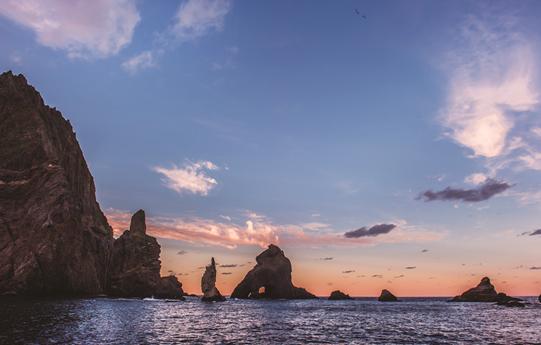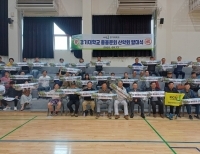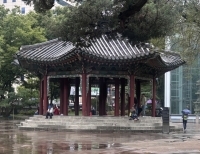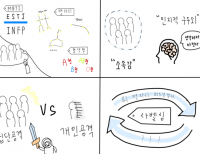
On January 1, 2024, there was a 7.6 magnitude earthquake in Japan. The Japan Meteorological Agency assigned a tsunami warning and advisory throughout the whole country. According to the tsunami warning status map, Hokkaido and Tottori are displayed in yellow, and Dokdo is included among them. South Korea’s Ministry of Foreign Affairs protested against the Japan Meteorological Agency and demanded corrective measures, and various experts insisted on a strong response to Japan. From the past to the present, there is still a tense conflict between Korea and Japan regarding Dokdo. Japan continuously claims Dokdo as its territory. However, in Korea, there are big and small issues involving Dokdo. For example, the Ministry of National Defense's military training textbook included the phrase “Dokdo sovereignty disputed area” and KBS News 9 received criticism for using a map that attributed Dokdo to Japan's exclusive economic zone (EEZ). As the conflict over Dokdo continues, Pharos is going to look at the Dokdo issue in detail.
It's not the first time that Japan has claimed Dokdo as its territory. At the Tokyo Olympics in 2020, there was a big backlash from civic groups because Dokdo was marked as Japanese territory. The promotional video for the Japan Ground Self-Defense Force also showed Dokdo as Japanese territory and caused controversy. For a long time, Japan has claimed that Korea illegally occupies Dokdo and demands that Korea return its territory. However, there are lots of reasons why Dokdo is Korea's territory. First, in terms of geography, Dokdo is quite closer to Korea than Japan. It's 87.4 km away from Ulleungdo and 157.5 km away from Japan's Oki Island, which is the closest to Dokdo. Second, in terms of history, Dokdo definitely belongs to Korea. The geography of 'Sejong Sillok,' which was published in 1415, shows that the distance from Ulleungdo to Dokdo isn't too far, so if the weather is clear, people can see Dokdo from Ulleungdo. 'Sukjong Sillok' was recorded when An Yong-bok, who was fishing, received recognition from Japan's government that Ulleungdo and Dokdo were Joseon's territory. In addition, in 1877, the Taejeonggwan, the highest institution within the Meiji government announced an order that Ulleungdo and Dokdo had no relationship with Japan based on the results of an investigation of diplomatic negotiations between Joseon and Japan over 5 months. On October 25, 1900, No. 41 of the Korean imperial order made sure that Dokdo belongs to Korea. Although there are lots of historical, and geographical reasons, there is a movement around the Japanese government to deny the significance of the Taejeonggwan Directive. They say that the Taejeonggwan order is only a domestic document and has no effect under international law. Japan is trying to spread the word to the public that Dokdo is their own territory.
If so, what is the reason that Japan wants to impute Dokdo as its territory? The reasons can be classified into two great divisions: Dokdo’s military and economic value. Dokdo has long held value as a strategic point in military flight and as a defense base. It is located in the center of the East Sea. The coast near Dokdo is the crossing area where powerful nations of Northeast Asia have faced each other. Therefore, Dokdo is one of the important national defense areas because Korea can monitor and check the Far East Russia fleet and Japan Maritime Self-Defense Force from there. It was proven that Dokdo had military during the Russo-Japanese War of 1905. Japan started the war and pressured the Korean Empire to conclude the Japan-Korea Treaty of 1904. Japan acquired rights that they could utilize areas that were useful in the war. They installed watchtowers on Jejudo, Ulleungdo, and others. They could gain the upper hand while they watched Russia's fleet from Dokdo. In the Battle of the East Sea that affected nearby Dokdo, Japan used Dokdo as an overwatch and exchange place. As a result, Japan had a great victory and noted Dokdo’s strategic value, after which they transferred Dokdo to Shimane Prefecture. After the Battle of the East Sea, also called the Battle of Dokdo, Japan shifted the war favorably for Japan. Japan used Dokdo as an outpost, they planned the Eastern front from Ulleungdo and Dokdo and completed installing a watchtower in August of the same year. Japan has been claiming Dokdo as its native domain based on the San Francisco Peace Treaty. The San Francisco Peace Treaty is the peace treaty that Japan signed with the allied powers consisting of 48 nations to end the Second World War. Article 2, paragraph 2 states, “Japan acknowledges Korea’s independence and they give up Korea’s domain including Jejudo, Geomundo, Ulleungdo, and other annexed island’s rights, qualification, and dominium.” However, this treaty doesn’t clarify that Japan gives back Dokdo to Korea. Therefore, Japan claims Dokdo as its territory still to this day.
Along with military value, Dokdo is located in a favorable position in terms of economic value. The ocean near Dokdo is rich with migratory fish stock. Dokdo is a fishing ground because Dokdo is a gathering place where North Korea's cold current and East Korea's warm current are united. Besides, cold sea fish and warm sea fish coexist in the ocean, so people can see various marine life. There are not only salmon, trout, cod, pollack, pacific saury, squid, and sharks, but also various fish that people can’t easily see in Korea like half-lined cardinal, blue dome, and five-banded cardinal fish, which are unrecorded species in Korea. Seaweed is the major source of income for fishermen. Kelp, sea mustard, sea cucumber, octopus, and abalone are plentiful near Dokdo. The amount of squid near Dokdo is more than 60% of Korea’s whole. Moreover, methane hydrate is stored in Dokdo‘s northwest in quantity. Hydrate is a natural gas, whose main ingredient is methane. Reserves of hydrate are more than existing hydrate. In addition, it can be used as a resource to determine whether oil resources exist or not. However, development technology is at a primary level now, and only Russia produces hydrate commercially. Besides, phosphorite has been discovered in the Korean plateauat Dokdo’s northern site. It has 30% content and it stores uranium and vanadium ore more than 30 times. These are reasons why Japan wants to impute Dokdo in their domain and it shows the importance of Dokdo at the same time.
What’s more is that Japan exploits Dokdo in a political way. They push the Korea-Japan conflict over Dokdo to gain Japanese political attention and to raise their approval ratings.

It’s important to examine why Japan is so obsessed with Korea's land, Dokdo, with its advantages and characteristics. First, Dokdo is famous for its beautiful natural environment and unique topography. Dokdo is a volcanic edifice that originated from a marine island about 4.6 million to 2.5 million years ago, and consists of nine layers of volcanic rock. Currently, it is difficult to find traces of volcano because it has been eroded over a long time. A representative part of Dokdo's natural environment can be the topography. Dokdo is divided into two islands: the Eastern Island and the Western
Island. There are six representative points of the Western Island. First, Daehan Peak is the top of the Western Island, one of the two large islands that make up Dokdo. Tanggeon Peak is located in the northern part of Western Island, and it is so named because the shape of the peak is similar to Tanggeon. The name of Samhyeongjegul Rock is based on oral traditions of local fishermen as there are a total of three caves. It does not officially belong to the Western Island, but is located near the Western Island. Next is Sangjanggun Rock. It is a rock that has the most coercive shape among the rocks of the Western Island, boasting outstanding panoramic views. Next, Elephant Rock was named for its unique shape of an elephant drinking water. Lastly, Kim Rock is a consistent name for its unique shape, and at this time, Kim means Haitai. The representative topography of Dokdo is the Korean Peninsula Rock. It is named after the shape of the Korean Peninsula when it is viewed from the north. In fact, it can show the shape of the Korean Peninsula, excluding the annexed islands. Next is Dongnimmun Rock. This rock is best known for its arch shape because it resembles a map of Korea. Next, the Cheonjang Cave was also used as a crater for Dokdo in the past, but according to academia, it is named after the cave which was recessed by erosion. Lastly, Murori Rock is the habitat of Murori, which is a name from the local fishermen. At this time, the Murori refers to a sea cormorant.
Next, Dokdo is home to various animals and plants. According to a survey conducted in 2005 and 2006, 126 species of bird were observed in Dokdo. Dokdo is a major resting area for migratory birds moving north and south and various natural monuments inhabit it. In 2013, a male Pine Grosbeak, a Siberian bird, was discovered for the first time in Dokdo. In addition, tens of thousands of sea lions inhabited the area around Dokdo. Gaje Rock, where they actually stayed is still there. However, sea lions gradually hid because of thoughtless overhunting by the Japanese in order to get leather before and after the Russo-Japanese War, and it is said that they were never seen again and were extinct after 1974. In 2008 and 2009, about 53 species of plants were identified in Dokdo’s flora and vegetation investigation. The topography of Dokdo is steep and the soil couldn’t develop, so there are few plants that grow themselves because of the lack of moisture due to draining rain, but the seeds blow over from Ulleungdo and there are 50-60 kinds of grass and trees on Dokdo. Among them, the spindle tree is the oldest existing tree on Dokdo and it is a tree that can grow itself and has great territorial and symbolic value as it has protected Dokdo, the eastern end of Korea. Therefore, it was designated as a natural monument No. 538 in Korea in 2012.
Lastly, Dokdo is also an island of great academic value in natural science. According to a survey by KAIST Department of Biotechnology, about 600 million tons of methane hydrate, called ‘burning ice,’ are buried in the seafloor near Dokdo. It is a future clean resource that generates water and methane gas when it melts and it is receiving attention as a development and research subject of major developed countries. Next is the manganese nodule. Its surface contains 4 major metals that are essential for high-tech industries such as manganese, nickel, copper, and cobalt, so it is emerging as a resource to replace the dried land resources. A large amount of manganese nodule potential in Dokdo is expected to bring the substitution effect of Korea’s metal imports. Next, phosphate minerals used in detergents, fodder, plating, etc., are also being found one after another in the ocean near Dokdo. Since there are few deposits in the world, it is expected that Dokdo’s utility value will increase more if more phosphate minerals are investigated and developed.
As shown above, Japan’s attempts to recognize Dokdo as Japan’s territory for military reasons show that the coast around Dokdo is one of the major defense regions for military activities in Northeast Asia. Also, they are obsessed with Dokdo for economic reasons since it is rich in various fish and natural resources. However, this does not change the fact that Dokdo is our territory, as the Sejong Sillok and Sukjong Sillok in the past stated explicitly that Dokdo is our territory historically, and it is certain that Dokdo is actually dominated by Korea under international law. Therefore, the territorial problem between Korea and Japan must never happen again, and we need to cultivate an accurate historical awareness. We should continue to pay more attention to Dokdo and try to protect it. Also, October 25 is Dokdo Day. How about paying more attention to Korea’s island, Dokdo, at least on October 25?
77th Reporter • JOE YEON WOO • amyjoe0213@naver.com
79th Reporter • CHO SEO YUN • jeoyum@gmail.com
80th Reporter • KIM YU JIN • yujinkim627@gmail.com
 Freedom Given to Youth: An Opportunity for Choice or a Burden of Constraint?
“Are we truly free today?” Classical literature is far more than time-honored stories. It offers profound insights into human nature and society that transcend time, remaining a valuable resource for examining the challenges our world faces today. This article will draw on George Orwell’s 1984 and Charles Dickens’ Oliver Twist to explore the contemporary issues of youth housing and the emergence of a surveillance society ...
Freedom Given to Youth: An Opportunity for Choice or a Burden of Constraint?
“Are we truly free today?” Classical literature is far more than time-honored stories. It offers profound insights into human nature and society that transcend time, remaining a valuable resource for examining the challenges our world faces today. This article will draw on George Orwell’s 1984 and Charles Dickens’ Oliver Twist to explore the contemporary issues of youth housing and the emergence of a surveillance society ...

 [단신] 산악회, 본교 동문의 버팀목이 될 수 있도록
[단신] 산악회, 본교 동문의 버팀목이 될 수 있도록
 [사회메인] 노인 인구 1,000만 시대, 준비 없는 사회가 불안해
[사회메인] 노인 인구 1,000만 시대, 준비 없는 사회가 불안해
 [네컷만화] 라벨링 문화
[네컷만화] 라벨링 문화
 [진리터] 결국 우리 모두 돌아볼 것이니
[진리터] 결국 우리 모두 돌아볼 것이니

 목록
목록












